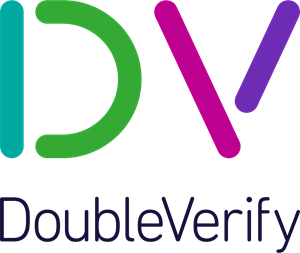DoubleVerify’s 2024 Predictions: CTV Ad Trends Include Increased Open Measurement Adoption
Dan Slivjanovski, CMO of the media measurement company DoubleVerify, sees three major CTV ad trends

As part of TV Tech’s series of articles on the upcoming trends for 2024, Dan Slivjanovski, CMO of the media measurement company DoubleVerify made a number of predictions for CTV advertising that include increased open measurement adoption and video level transparency at scale.
Here are his thoughts:
Prediction #1: Increased Open Measurement Adoption
Since its inception, CTV advertising has faced limitations due to the unique nature of the environment. According to DV data, for example, one-third of CTV impressions serve in environments that play ads and fire impressions long after the TV is turned off, making viewability an important CTV metric.
To help address these issues, the IAB released open measurement for Apple TV, Amazon Fire and Android TV devices. Open measurement allows providers to access more robust device-level viewability and attention signals which provides more granular, impression-level measurement.
Although open measurement was released for CTV in the summer of 2022, it’s taken time for suppliers and app publishers to adopt the technology. DV predicts that early adopters will begin supporting open measurement in 2024.
Open measurement unlocks: full cross-screen viewability measurement using the same underlying expectations and specifications across CTV, mobile and desktop environments; exactly how many ads serve partially off-screen or to TVs that are turned off; audio and AVOC measurement; the ability to transact on viewable impressions in CTV, which is already a common billable metric on desktop and mobile; and measurement and reporting based on customized viewability standards
Get the TV Tech Newsletter
The professional video industry's #1 source for news, trends and product and tech information. Sign up below.
Prediction #2: Video-Level Brand Safety and Suitability Solutions
According to our own study, two-thirds of consumers are likely to stop using a brand or product if their ads are played next to false, objectionable or inflammatory content. Advertisers have seen or experienced the cost of neglecting brand safety and suitability standards across the board, and these challenges can extend to CTV. To give advertisers more transparency and control over the CTV environments in which their ads play, a number of brand safety and suitability solutions have been released.
Many verification providers have chosen one of two routes:
App-level suitability, with current industry-level limitations, provides the most scale and ability to create brand suitability solutions that allow advertisers to control their suitability settings. Although, it lacks granularity at the channel or episode level.
Video-level suitability can provide more granular data, such as network, channel and rating, but is often only available from small suppliers that don’t have much traffic. Video-level suitability also isn’t typically verified independently and can miss larger-scale suitability issues which can best be detected at the app level with the industry’s current capabilities. Because of this, video-level suitability data won’t provide the average advertiser with as much insight into the brand suitability of their ad environments at this time.
The industry still has a long way to go before CTV can reach parity with the data granularity available on other devices and platforms. Larger publishers and distributors need to provide video-level data access to third-party verification providers at scale to provide the transparency that advertisers want. With video-level suitability data becoming a bigger priority for advertisers, though, DV predicts that it will become more widely available beginning in 2024.
Prediction #3: The Growth of Attention Measurement in CTV
To prove that an ad campaign produced a return on investment, advertisers need to measure its performance on every platform. But this has been challenging on CTV due to the lack of available KPIs to measure performance and optimize outcomes. As a proxy, most CTV advertisers currently optimize campaigns based on cost. However, this presents a challenge when most advertisers are already purchasing inventory at the lowest prices when buying directly from publishers or private marketplaces (PMPs). For this reason, advertisers have been especially overdue for a solution to better gauge impact on this channel.
A key part of evaluating advertiser impact is measuring audience attention, and this consideration is extended to CTV. In fact, research shows that only 30 percent of CTV ads garner two or more seconds of eyes-on-screen attention, which makes attention a critical metric to track and monitor on CTV.
With the increased demand and general advancement of CTV viewability measurement technology, the development of granular attention measurement for CTV continues to be an industry priority. DV predicts CTV attention measurement will become more widely available and see increased adoption in 2024.
